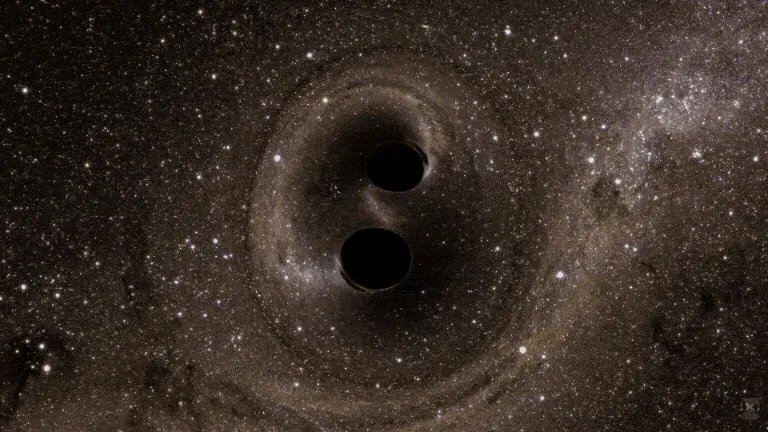
A Cosmic Leap: The Moment Gravitational Waves Changed Everything – Sept. 14, 2015
2025-09-14
Author: Lok
A Historic Discovery Unveiled
On this day, a decade ago, physicists marked a monumental leap in our understanding of the universe by detecting gravitational waves for the very first time. This groundbreaking event not only validated theories of the past but opened a new chapter in astrophysics.
Einstein's Bold Prediction
The concept of gravitational waves, as theorized by Albert Einstein a century prior, posited that massive celestial bodies would bend the fabric of space-time. When these titanic entities, like black holes, collide, they would create ripples in the cosmos. However, Einstein believed these ripples would be so minuscule that detecting them was beyond the realm of possibility.
The Visionary Behind the Detection
Fast forward to the 1970s, when MIT physicist Rainer Weiss envisioned a way to potentially capture these elusive waves. Sadly, Weiss passed away in August, but his legacy lives on through this extraordinary achievement. He proposed utilizing an interferometer, a device designed to split a beam of laser light into two paths. If gravitational waves were present, the beams would momentarily shift out of sync as space-time flexed around them.
Building the Dream
Weiss, alongside the esteemed physicist Kip Thorne from Caltech, championed the notion of measuring these tiny fluctuations. Their plan called for two sprawling detectors—spaced apart to distinguish genuine cosmic signals from local noise. By 1990, the Laser Interferometer Gravitational-Wave Observatory (LIGO) was approved, leading to the construction of two massive L-shaped detectors in Hanford, Washington, and Livingston, Louisiana, each boasting arms stretching 2.5 miles (4 kilometers).
Years of Silence, Then a Breakthrough
For years, LIGO remained quiet—until it upgraded its equipment to heighten sensitivity to faint signals. This involved shielding the detectors from vibrations caused by nearby activities, ensuring the integrity of the signals captured from deep space.
The Moment of Revelation
On September 14, 2015, with bated breath, the scientists activated the enhanced instruments. Shortly after, they detected a remarkable phenomenon. "Looking at the screen, I was astounded to see the waveform that matched Einstein's predictions perfectly!" Weiss later recalled.
A Universe Transformed
The signal, a distinctive "chirp" reflecting subtle length changes in the detector arms, was astronomically small—about a thousand times thinner than an atomic nucleus. On February 11, 2016, it was announced that this signal originated from the collision of two massive black holes, merging around 1.3 billion years ago, a milestone later corroborated by Europe’s Virgo experiment.
A New Frontier in Astrophysics
This pivotal discovery transformed our capacity to investigate celestial phenomena. Since that inaugural detection, LIGO, along with its European and Japanese counterparts, has observed nearly 300 cosmic collisions, including spectacular triple black hole mergers and interactions between black holes and neutron stars. As of June 2023, scientists revealed a faint gravitational wave background, evidence of endless celestial collisions echoing throughout the universe.
Looking Ahead: Quantum Horizons
Building on these achievements, in September 2025, researchers connected Stephen Hawking's long-pondered theories with groundbreaking insights about black holes, bridging the realms of quantum mechanics and general relativity. The story of gravitational waves continues to unfold, illuminating the darkest corners of our universe.



 Brasil (PT)
Brasil (PT)
 Canada (EN)
Canada (EN)
 Chile (ES)
Chile (ES)
 Česko (CS)
Česko (CS)
 대한민국 (KO)
대한민국 (KO)
 España (ES)
España (ES)
 France (FR)
France (FR)
 Hong Kong (EN)
Hong Kong (EN)
 Italia (IT)
Italia (IT)
 日本 (JA)
日本 (JA)
 Magyarország (HU)
Magyarország (HU)
 Norge (NO)
Norge (NO)
 Polska (PL)
Polska (PL)
 Schweiz (DE)
Schweiz (DE)
 Singapore (EN)
Singapore (EN)
 Sverige (SV)
Sverige (SV)
 Suomi (FI)
Suomi (FI)
 Türkiye (TR)
Türkiye (TR)
 الإمارات العربية المتحدة (AR)
الإمارات العربية المتحدة (AR)